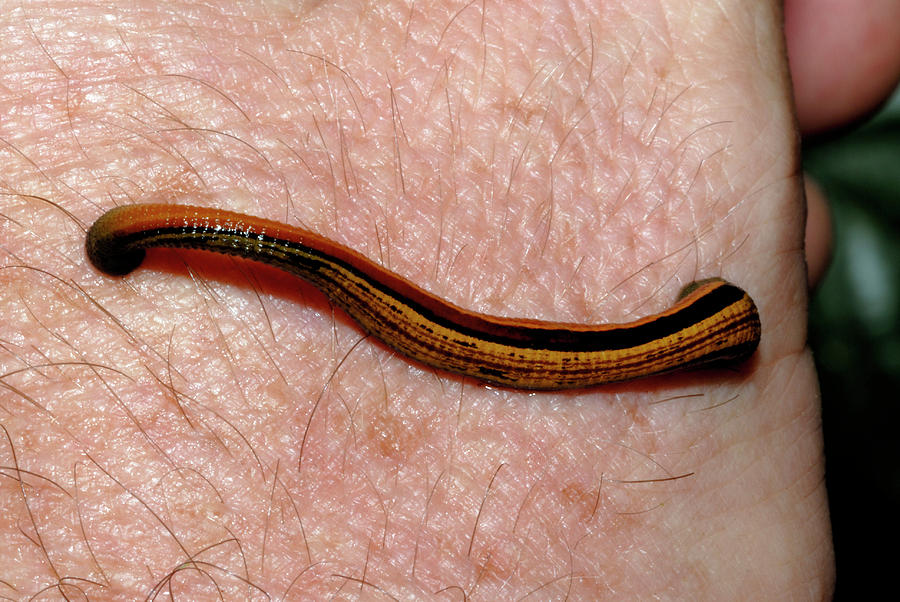

Along with well-established tools such as camera traps and fecal samples, the use of indicator species has emerged as a viable technique to gain insight into the distributions of tropical vertebrates (Drinkwater et al., 2019). Studying wildlife in dense tropical forests is often difficult, and researchers benefit from having a broad toolkit available to them for monitoring these populations. Hasil lain juga menunjukkan bahwa pacet harimau bisa lebih sensitif terhadap tingkat kelembaban tanah yang lebih rendah. Pada akhirnya, hasil kami menunjukkan bahwa pacet harimau memiliki distribusi yang lebih sempit, terbatas pada tipe hutan elevasi yang lebih rendah dengan retensi air yang lebih tinggi. Selain itu, kami menemukan bahwa keberadaan satu spesies memiliki efek positif pada keberadaan spesies lainnya. Di antara faktor-faktor biotik, tipe hutan memiliki pengaruh yang berbeda terhadap jumlah kedua spesies: saat jumlah pacet harimau ditemukan lebih besar di tipe hutan dengan elevasi rendah, sedangkan jumlah pacet coklat ditemukan lebih besar di tipe hutan dengan elevasi tinggi. Kami membandingkan serangkaian model campuran binomial negatif dan menemukan bahwa, dari faktor abiotik, kelembaban tanah memiliki efek positif terbesar pada tingkat pertemuan kedua spesies pacet tersebut.


Kami telah menganalisis dari kumpulan data jangka panjang (2012–2020) tentang spesies pacet harimau ( Haemadipsa picta) dan coklat ( Haemadipsa spp.) yang memiliki kekerabatan dekat, untuk menyelidiki apakah dan bagaimana faktor abiotik dan biotik dapat memengaruhi kemunculannya di seluruh gradien tipe hutan pada suatu lokasi hutan hujan tropis yang tidak terganggu di Kalimantan, Indonesia. Sebagai contoh, sampai saat ini tidak ada penelitian yang menilai keberadaan dan distribusi pacet haemadipsid di seluruh gradien alami di dalam habitat yang masih utuh. Mereka seringkali digunakan sebagai taksa indikator untuk biomonitoring, namun sangat sedikit yang diketahui tentang ekologi dasar mereka. Pacet haemadipsid adalah penghuni hutan tropis dan sub-tropis, yang hidup di kawasan Indo-Pasifik. Finally, our results show that the tiger leech has a narrower distribution, being restricted to lower elevation forest types with higher water retention, suggesting that the tiger leech could be more sensitive to lower soil moisture levels.Ībstract in Indonesian is available with online material. Additionally, we found that the presence of one species had a positive effect on the presence of the other species. Among biotic factors, forest type had differential effects on counts of the two species: while tiger leech counts were greater in low elevation forest types, brown leech counts were greater in high elevation forest types.
#TIGER LEECH SERIES#
We compared a series of negative binomial mixed models and found that, of the abiotic factors, soil moisture had the largest positive effect on encounter rates of both leech species. We analyzed a long-term data set (2012–2020) on the closely related tiger ( Haemadipsa picta) and brown ( Haemadipsa spp.) leech species to investigate if and how abiotic and biotic factors influence their occurrence across a gradient of forest types at an undisturbed tropical rainforest site in Indonesian Borneo. For example, to date no study has assessed the occurrence and distribution of haemadipsid leeches across naturally occurring gradients within intact habitats. They are increasingly used as indicator taxa for biomonitoring, yet very little is known about their basic ecology.

Haemadipsid leeches are ubiquitous inhabitants of tropical and sub-tropical forests in the Indo-Pacific region.


 0 kommentar(er)
0 kommentar(er)
